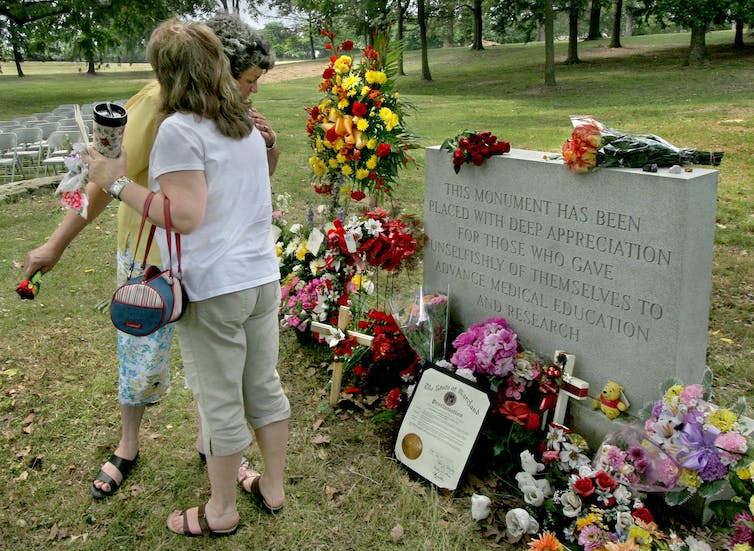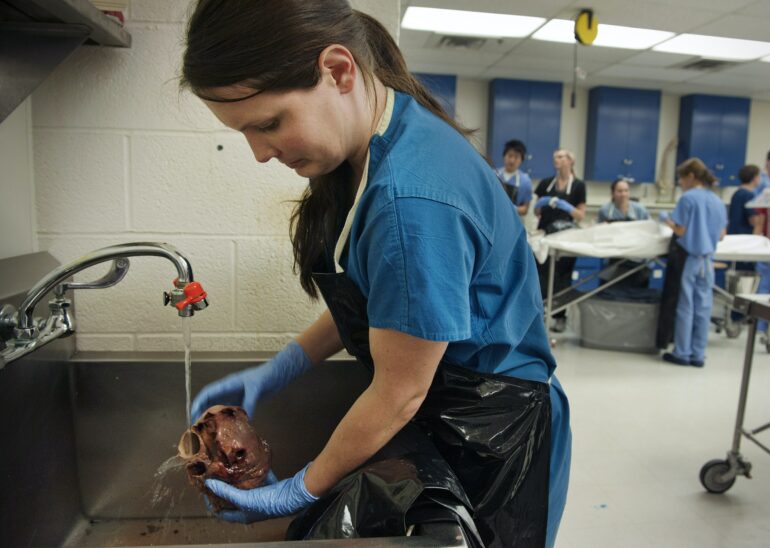In 1956, Alma Merrick Helms announced that she was bound for Stanford University. But she would not be attending classes. Upon learning that there was a “special shortage of women’s bodies” for medical students, this semiretired actress had filled out forms to donate her corpse to the medical college upon her death.
As historians of medicine, we had long been familiar with the tragic tales of 18th- and 19th-century grave robbing. Medical students had to snatch unearthed bodies if they wanted corpses to dissect.
But there was little to no discussion of the thousands of Americans in the 20th century who wanted an alternative to traditional burial – those men and women who gave their bodies to medical education and research.
So we decided to research this especially physical form of philanthropy: people who literally give themselves away. We are now writing a book on this topic.
Grave robbing and executed criminals
As more and more medical schools opened before the Civil War, the profession faced a dilemma. Doctors needed to cut open dead bodies to learn anatomy because no one wanted to be operated on by a surgeon who had only been trained by studying books.
But for most Americans, cutting up dead human beings was sacrilegious, disrespectful and disgusting.
According to the ethos of the day, only criminals deserved such a fate after death, and judges intensified murderers’ death sentences by adding the insult of dissection after their executions. As in life, the bodies of enslaved people were also exploited in death, either consigned for dissection by their masters or robbed from their graves.
Yet there were never enough legally available bodies, so grave robbing flourished.
The unclaimed poor
To meet the medical professon’s growing demand for cadavers, Massachusetts enacted the first anatomy law. This measure, passed in 1831, made the bodies of the unclaimed poor available for dissection in medical schools and hospitals.
With more medical schools opening and grave-robbing scandals pushing politicians to act, similar legislation eventually took effect across the United States.
One of the most visible incidents occurred when the body of former Rep. John Scott Harrison, both the son and the father of U.S. presidents, involuntarily turned up on an Ohio dissecting table in 1878.
In many states, kin and friends could claim a body that would otherwise be destined for dissection, but only if they could pay burial costs.

Monuments to honor those who have donated their bodies to science like this one can offer opportunities for their loved ones to mourn and remember them.
Michael Williamson/The Washington Post via Getty Images
Donated bodies
Yet not everyone shared the horror at the very idea of being dissected.
By the late 19th century a growing number of Americans were willing to let medical students cut up their bodies before eventual burial or cremation. It did not…
